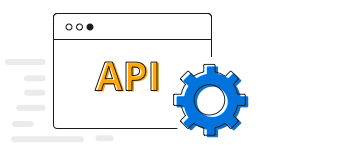Overview
ASP.NET Core 100% stacked bar chart displays multiple series of data as stacked bars, ensuring that the cumulative proportion of each stacked element always totals 100%. Hence, the y-axis will always be rendered with the range 0–100.
Multi series
Allows you to plot multiple series in a single chart to compare different data sets. Enabling legend and tooltip gives more information about the individual series.
Marker
Marks data points with built-in shapes such as circles, rectangles, ellipses, vertical lines, horizontal lines, diamonds, triangles, pentagons, crosses, and pluses. In addition to these shapes, use images to make the point more attractive.
Data label
Data labels display information about data points. Add a template to display data labels with HTML elements such as images, DIV, and spans for more informative data labels. You can rotate a data label by its given angle.
Multiple axes
Use multiple axes to plot different data sets that widely vary from one other.
Stacking group
Allows grouping a series with another series separately using a different group name.
Spacing and width
The 100% Stacked bar chart provides an option to customize the spacing between two bars and width of the bar.
Rounded corners
Modernize the UI by applying rounded corners to the 100% stacked bar
100% Cylindrical stacked bar
Modernize the UI by displaying value as cylindrical-shaped data points.
Customization
Customize the look and feel of the 100% stacked bar chart using built-in APIs.
ASP.NET Core 100% Stacked Bar Chart code example
Easily get started with the ASP.NET Core 100% Stacked Bar Chart using a few simple lines of C# code, as demonstrated below. Also explore our ASP.NET Core 100% Stacked Bar Chart example that shows you how to render and configure the charts.
<ejs-chart id="container">
<e-chart-primaryxaxis valueType="Category">
</e-chart-primaryxaxis>
<e-series-collection>
<e-series name="series1" xName="xValue" yName="yValue" dataSource="ViewBag.dataSource"
type="@Syncfusion.EJ2.Charts.ChartSeriesType.StackingBar100">
</e-series>
<e-series name="series1" xName="xValue" yName="yValue1" dataSource="ViewBag.dataSource"
type="@Syncfusion.EJ2.Charts.ChartSeriesType.StackingBar100">
</e-series>
</e-series-collection>
</ejs-chart>public class HomeController : Controller
{
public ActionResult Index()
{
List<ChartData> chartData = new List<ChartData>
{
new ChartData { xValue = "2014", yValue = 21, yValue1 = 21 },
new ChartData { xValue = "2015", yValue = 24, yValue1 = 31},
new ChartData { xValue = "2016", yValue = 36, yValue1 = 14 },
new ChartData { xValue = "2017", yValue = 38, yValue1 = 31 },
new ChartData { xValue = "2018", yValue = 54, yValue1 = 11 },
new ChartData { xValue = "2019", yValue = 57, yValue1 = 24 },
new ChartData { xValue = "2020", yValue = 70, yValue1 = 16 },
};
ViewBag.dataSource = chartData;
return View();
}
}
public class ChartData
{
public string xValue;
public double yValue;
public double yValue1;
}Learning Resources

100% Stacked Bar Chart User Guide
Learn the available options to customize ASP.NET Core 100% stacked bar chart.

